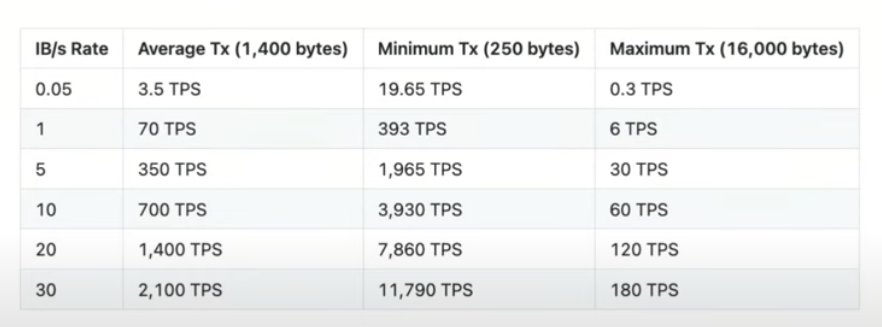In news that had crypto fans clutching their oat milk lattes, Charles Hoskinson went live (from Colorado, where apparently altitude = protocol insight?) on the 1st of May 2025. The big reveal? Actual numbers for Ouroboros Leios—Cardano’s latest attempt to make words like “infinite” mean something other than what your ex promised. For those keeping tabs, Hoskinson straight-facedly called Leios “a one-minus-delta protocol,” which, let’s be honest, sounds like a math joke Alan Turing told at parties.
Ouroboros Leios: Cardano’s Boldest Upgrade… Since Last Wednesday
According to our turtleneck-wearing hero, Leios is Cardano’s most “ambitious” Ouroboros yet. (You know, as opposed to their previous napkin-doodle releases.) It’s got a telescoping design that “extends Prowse,”—try not to snicker—and can apparently shrink back to the old system faster than I can delete a questionable Tinder message. No worries about collapsing into chaos though: all your Byzantine-fault-tolerance and non-stop uptime are still on the table. (Yes, 24/7, like your least favorite fast-food joint.)
Highlight of the stream? A thrilling slide—yes, a slide—that had everyone’s Discord pings in overdrive. The hot new stat: something called the “input-block rate,” a fresh dial Cardano can turn up or down to multiply transaction throughput. How? By dumping in a bunch of “input blocks” before anyone’s chosen to do the ranking. Think queue-jumping at Disneyland, but for nerds.
Hoskinson’s demo went something like, “You’ve got just one input block? Congrats: 6 TPS.” Add more (5, 10, 20, 30—insert ‘80s power ballad guitar riff), and poof: 11,000 TPS at minimum transaction sizes! For the record: 16,000 KB transactions get you only 180 TPS—a gentle reminder that size does matter.

Now, because this IB thing is adjustable (Hoskinson called it “tick” and “tock”—no, I’m not making that up), Cardano governors can fiddle with it year after year, pumping up speed like someone trying to microwave soup faster. Each tweak is followed by tweaks to the code, the network, and probably Hoskinson’s wardrobe just to keep things fresh. In his own words, “year-by-year Cardano gets naturally faster.” Presumably, also younger and sexier, but he stopped short of promising that.
Of course, Leios is smashing up the Haskell node codebase in a way not seen since Cardano switched from Ouroboros-BFT to Shelley back in 2020. Every single part—ledger, blocks, rules, and probably the company coffee machine—gets a Leios touch. The project is running “follow-the-sun” dev cycles, which is Silicon Valley code for “let the Australians have a crack while London sleeps.”
When Is Cardano Actually Going To Deliver Leios? (No, Really?)
Now comes the part where everyone asks: “When moon?” Not so fast. Hoskinson offered a spicy helping of realism—no gentle hand-holding here. Apparently, it takes “about nine to twelve months” to drag a SIP from document to protocol. (Translation: long enough to forget you ordered it.) The important-sounding paperwork—formal spec, simulations, Cardano Improvement Proposal—should drop “the second half of this year.” After that, it’s off to the RFP races, and may the best Haskell/Rust/Go magicians win.
Meanwhile, Leios brings friends to the scalability house party: Hydra, Mithril, Midgard’s optimistic roll-ups and something called recursive-SNARKs. It’s an acronym salad, but all you really need to know is: Cardano’s UTXO model is practically begging to cram in zero-knowledge proofs. (No, Nana, that’s not illegal.)
In theory, Leios and Layer-2 are the Reese’s PB Cup of transaction scaling: you get a bigger highway (Leios), zippy side roads (Layer 2s), and apparently enough headroom to weather “the enormous transaction volume that Bitcoin DeFi, XRP DeFi, and us becoming an AVS system” might unleash. Which frankly sounds like the crypto version of prepping for alien invasion.
Bottom line, according to the always-modest Hoskinson: “Nobody in the cryptocurrency industry writes a SIP, has dense simulations and prototyping, and a formal specification as the definition of an RFP. Nobody does that.” Cardano: basically if NASA did blockchain, but with more tweets threatening to go outside.
If everything goes exactly to plan (which, as we all know, it will, because software never breaks), Cardano holders may actually get to vote on Leios by early 2026. Could live throughput hit 11,000 TPS by year-end, all while keeping their famed security? Stranger things have happened—like me finishing Dry January.
In other news, ADA was trading at $0.71. At least the graphs are decisive: down, up, sideways—like the world’s most chaotic conga line. 💃🕺

Read More
- 50 Ankle Break & Score Sound ID Codes for Basketball Zero
- Who Is Harley Wallace? The Heartbreaking Truth Behind Bring Her Back’s Dedication
- 50 Goal Sound ID Codes for Blue Lock Rivals
- Mirren Star Legends Tier List [Global Release] (May 2025)
- How to play Delta Force Black Hawk Down campaign solo. Single player Explained
- Here’s Why Your Nintendo Switch 2 Display Looks So Blurry
- Elden Ring Nightreign Enhanced Boss Arrives in Surprise Update
- KPop Demon Hunters: Real Ages Revealed?!
- 100 Most-Watched TV Series of 2024-25 Across Streaming, Broadcast and Cable: ‘Squid Game’ Leads This Season’s Rankers
- Jeremy Allen White Could Break 6-Year Oscars Streak With Bruce Springsteen Role
2025-05-02 21:00